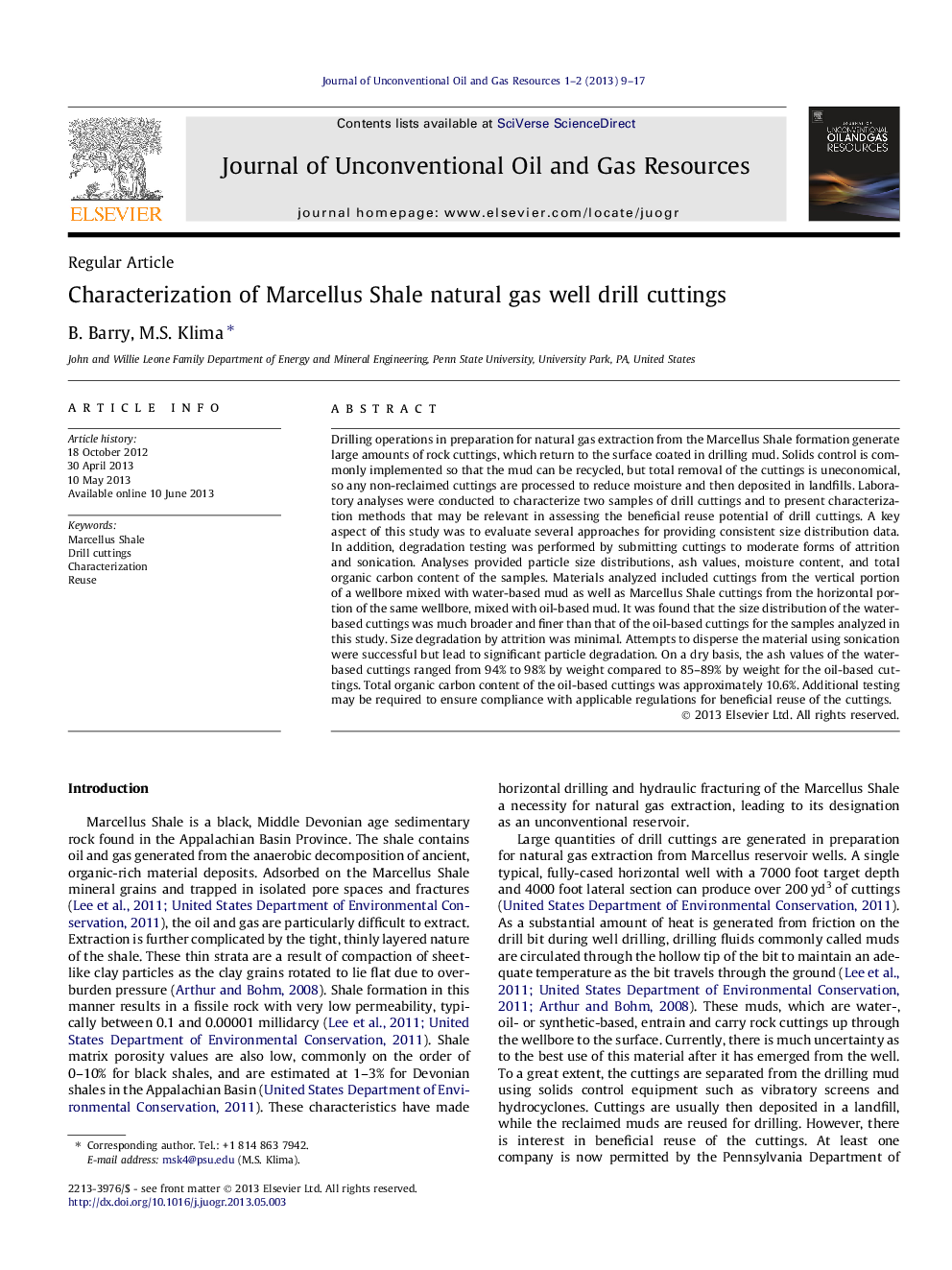| Article ID | Journal | Published Year | Pages | File Type |
|---|---|---|---|---|
| 1756741 | Journal of Unconventional Oil and Gas Resources | 2013 | 9 Pages |
•Marcellus Shale drilling well cuttings characterized by particle size distributions.•Sieve shaking time of 25 minutes achieves consistent particle size distribution.•Cuttings particle size degradation by attrition in a tumbling mill was minimal.•Ultrasonic treatment achieved dispersion but may lead to particle size degradation.
Drilling operations in preparation for natural gas extraction from the Marcellus Shale formation generate large amounts of rock cuttings, which return to the surface coated in drilling mud. Solids control is commonly implemented so that the mud can be recycled, but total removal of the cuttings is uneconomical, so any non-reclaimed cuttings are processed to reduce moisture and then deposited in landfills. Laboratory analyses were conducted to characterize two samples of drill cuttings and to present characterization methods that may be relevant in assessing the beneficial reuse potential of drill cuttings. A key aspect of this study was to evaluate several approaches for providing consistent size distribution data. In addition, degradation testing was performed by submitting cuttings to moderate forms of attrition and sonication. Analyses provided particle size distributions, ash values, moisture content, and total organic carbon content of the samples. Materials analyzed included cuttings from the vertical portion of a wellbore mixed with water-based mud as well as Marcellus Shale cuttings from the horizontal portion of the same wellbore, mixed with oil-based mud. It was found that the size distribution of the water-based cuttings was much broader and finer than that of the oil-based cuttings for the samples analyzed in this study. Size degradation by attrition was minimal. Attempts to disperse the material using sonication were successful but lead to significant particle degradation. On a dry basis, the ash values of the water-based cuttings ranged from 94% to 98% by weight compared to 85–89% by weight for the oil-based cuttings. Total organic carbon content of the oil-based cuttings was approximately 10.6%. Additional testing may be required to ensure compliance with applicable regulations for beneficial reuse of the cuttings.
